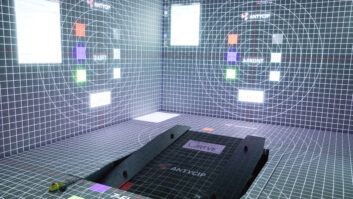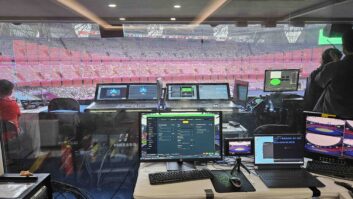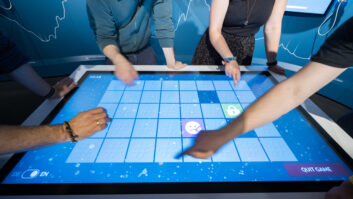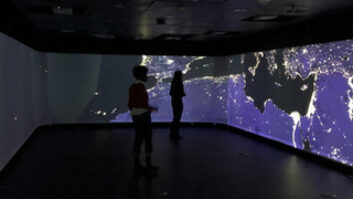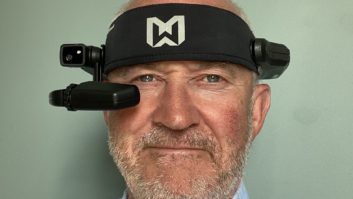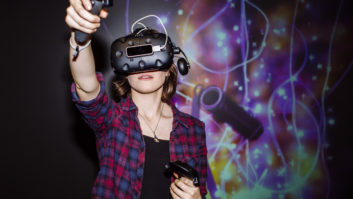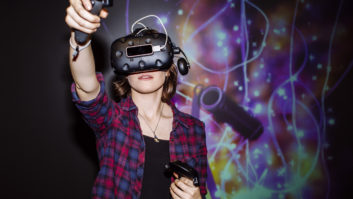
Our columnist Rob Lane discusses the world of VR, following the F8 Oculus Rift update.
I wrote about Facebook’s March 2014 acquisition of Oculus Rift in a previous edition, looking at whether the $2 billion (£1.3 billion) deal would be a game-changer for virtual reality. More than a year on, and following Facebook’s latest F8 conference, in late March, how has the social networking company influenced what’s happening in VR, and how is the technology informing what’s happening in the commercial installation market and further afield?
The F8 developer conference was attended by over 3,000 app developers and talk during and after was dominated by Oculus Rift. The gaming industry has, unsurprisingly, been getting very excited about Rift and VR headsets in general, but this isn’t what’s floating Facebook supremo Mark Zuckerberg’s virtual boat. His comments that he sees Rift as “a platform for many other experiences” and a “new communication platform” are on the money – all $2 billion of it!
Sure, gaming apps will continue to have a part to play, but VR has got so much more to offer, and it isn’t hard to imagine how installations will be enhanced by Rift in more sober environments such as boardrooms.
Disappointingly for Facebook users, Zuckerberg is yet to set a timeframe on availability of Rift. However, further afield, VR (and its cousin AR) have not been out of the news since last March’s acquisition. As a result, more clients are requesting a virtual reality component as part of their installations, and an increasing number of integrators are upping their VR skillsets in an attempt to steal a march on the competition.
We’d already seen a number of installation-based uses for Rift, several before Facebook splashed the cash. These include Arcstream AV’s Peugeot 308 experiential tour, Holovis’ RideView simulation, Cross Design Group’s viewing of museum artefacts and INITION’s VR fashion catwalk for Topshop.
More recently, in early April, INITION worked with Westfield shopping centres to use Oculus Rift to showcase the future of retail. Shoppers were able to experience Rift and a three-minute 360º immersive interactive experience, which also utilised a Leap Motion sensor to allow users to move in three different ‘dreamscape worlds’.
In the same month, Chronicles VR staged a new museum-based VR experience for the Great North Museum in Newcastle. Users explored a virtual tour of a Greek villa, inspecting virtual artefacts that were also on display in the museum, and getting an understanding of how they would have looked in their original setting.
Across the pond during April’s New York Auto Show, Toyota’s ‘Distracted Driving Simulator’ placed punters behind the wheel of a real Corolla LE Eco, with a Rift headset driving sim interacting with the steering wheel and a pair of headphones. Two virtual passengers bombarded users with commentary and requests to check out text messages, to the accompanying loud music, and users had to avoid various distractions.
Away from the commercial installation market, but doubtless influenced by Oculus Rift’s Facebook-led ubiquity (it was initially a Google Glass-based project), and food for thought for integrators, PatientVR has been designed to help frontline healthcare providers understand what patients are going through.
Trialing at Torbay Hospital, it comprises a demo video filmed using two GoPros attached to the head of the ‘patient’. Footage from a further seven GoPros was stitched together to produce a 360º viewpoint of the surroundings. Rift-wearing health professionals are able to look all around them and zoom in and out, in order to get a feel for the situation from the patient’s perspective and ultimately report back on what he or she thinks of the patient’s state of mind.
It’s hard to disagree with Mark Zuckerberg’s statement that Oculus Rift can be a platform for “many other experiences” when you consider how it has been used thus far. A year on from the Facebook acquisition and we’re still just scraping the surface of VR’s potential.
